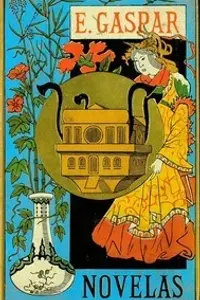Resumen
This collection by Enrique Gaspar y Rimbau, a pioneering Spanish author of the 19th century, includes three imaginative and culturally reflective stories, the most famous of which is El anacronópete, one of the earliest known time travel novels.
1.
El anacronópete (1887)
A landmark in science fiction, El anacronópete ("The Anachronopete") tells the tale of a Spanish scientist, Don Sindulfo, who invents a giant iron time machine capable of transporting people into the past. The name itself combines Greek roots to mean "one who flies against time." Unlike H.G.
Wells’ The Time Machine (published later), Gaspar's narrative includes humor, satire, and political commentary—especially critiquing social customs, religion, and the rigidity of historical dogma.
This is not only a tale of fantastic travel but also a philosophical exploration of how people, cultures, and moral systems evolve (or fail to).
2.
Viaje a China (Journey to China)
A cultural and satirical travelogue, this piece takes readers on a fictional journey to Imperial China, reflecting European fascination (and often misunderstanding) of Eastern traditions.
Through the eyes of the narrator, Gaspar critiques colonial arrogance and exoticism, while showcasing his interest in cross-cultural encounters and ethical dilemmas.
3.
Metempsicosis
Rooted in philosophy and mysticism, this short story explores the ancient concept of soul transmigration (metempsychosis).
Gaspar dives into the continuity of identity and spiritual evolution, narrating a journey of reincarnation through different lives, species, and moral lessons.
It’s a meditative piece on the nature of the soul and human responsibility.
